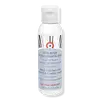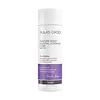What's inside
What's inside
 Key Ingredients
Key Ingredients

 Benefits
Benefits

 Concerns
Concerns

 Ingredients Side-by-side
Ingredients Side-by-side

Water
Skin ConditioningGlycerin
HumectantGlycereth-26
HumectantSqualane
EmollientSorbitan Oleate
EmulsifyingPhenoxyethanol
PreservativeEthylhexyl Salicylate
UV AbsorberAcrylates/C10-30 Alkyl Acrylate Crosspolymer
Emulsion StabilisingColloidal Oatmeal
AbsorbentMel
EmollientSaccharomyces/Honey Ferment Filtrate
Skin ConditioningChrysanthemum Parthenium Extract
Skin ConditioningSodium Hydroxide
BufferingPotassium Sorbate
PreservativeAvena Sativa Kernel Extract
AbrasiveSodium Benzoate
MaskingCitric Acid
BufferingBeta-Glucan
Skin ConditioningCamellia Sinensis Leaf Extract
AntimicrobialGlycyrrhiza Glabra Root Extract
BleachingPropolis Extract
Skin ConditioningSodium Hyaluronate
HumectantXanthan Gum
EmulsifyingEthylhexylglycerin
Skin ConditioningTetrasodium EDTA
Chlorphenesin
AntimicrobialBenzoic Acid
MaskingSorbic Acid
PreservativeWater, Glycerin, Glycereth-26, Squalane, Sorbitan Oleate, Phenoxyethanol, Ethylhexyl Salicylate, Acrylates/C10-30 Alkyl Acrylate Crosspolymer, Colloidal Oatmeal, Mel, Saccharomyces/Honey Ferment Filtrate, Chrysanthemum Parthenium Extract, Sodium Hydroxide, Potassium Sorbate, Avena Sativa Kernel Extract, Sodium Benzoate, Citric Acid, Beta-Glucan, Camellia Sinensis Leaf Extract, Glycyrrhiza Glabra Root Extract, Propolis Extract, Sodium Hyaluronate, Xanthan Gum, Ethylhexylglycerin, Tetrasodium EDTA, Chlorphenesin, Benzoic Acid, Sorbic Acid
Water
Skin ConditioningGlycerin
HumectantPentylene Glycol
Skin ConditioningPolysorbate 20
EmulsifyingSuperoxide Dismutase
AntioxidantCamellia Sinensis Leaf Extract
AntimicrobialEpilobium Angustifolium Flower/Leaf/Stem Extract
Skin ConditioningVitis Vinifera Seed Extract
AntimicrobialSodium PCA
HumectantCreatine
Skin ConditioningLecithin
EmollientLinoleic Acid
CleansingLinolenic Acid
CleansingSodium PEG-7 Olive Oil Carboxylate
EmulsifyingMagnesium Ascorbyl Phosphate
AntioxidantTocopheryl Acetate
AntioxidantButylene Glycol
HumectantPanthenol
Skin ConditioningAllantoin
Skin ConditioningPEG-4
HumectantHydroxyethylcellulose
Emulsion StabilisingPhenoxyethanol
PreservativeWater, Glycerin, Pentylene Glycol, Polysorbate 20, Superoxide Dismutase, Camellia Sinensis Leaf Extract, Epilobium Angustifolium Flower/Leaf/Stem Extract, Vitis Vinifera Seed Extract, Sodium PCA, Creatine, Lecithin, Linoleic Acid, Linolenic Acid, Sodium PEG-7 Olive Oil Carboxylate, Magnesium Ascorbyl Phosphate, Tocopheryl Acetate, Butylene Glycol, Panthenol, Allantoin, PEG-4, Hydroxyethylcellulose, Phenoxyethanol
 Reviews
Reviews

Ingredients Explained
These ingredients are found in both products.
Ingredients higher up in an ingredient list are typically present in a larger amount.
Camellia Sinensis Leaf Extract is derived from the leaves of the tea plant. Black tea, green tea, and oolong tea are all harvested from this plant.
This ingredient has many skin benefits:
This ingredient contains polyphenols, a strong antioxidant. Antioxidants help fight off molecules that damage skin cells.
On top of that, the antioxidants in green tea neutralize free-radicals from the sun. This gives the skin some extra UV protection, but should not replace sunscreen.
Many components of tea have anti-inflammatory properties.
Polyphenols and L-theanine help soothe the skin and reduce irritation. The caffeine in Camellia Sinensis Leaf Extract helps calm inflamed blood vessels.
Other compounds found in tea include: Vitamin Bs, linoleic acid, magnesium, calcium, iron, and zinc.
Research has shown both drinking Camellia Sinensis Leaf Tea and applying it to the skin can help boost skin elasticity and hydration. Studies also show using tea extract may reduce sebum, or oil, production.
Learn more about Camellia Sinensis Leaf ExtractGlycerin is already naturally found in your skin. It helps moisturize and protect your skin.
A study from 2016 found glycerin to be more effective as a humectant than AHAs and hyaluronic acid.
As a humectant, it helps the skin stay hydrated by pulling moisture to your skin. The low molecular weight of glycerin allows it to pull moisture into the deeper layers of your skin.
Hydrated skin improves your skin barrier; Your skin barrier helps protect against irritants and bacteria.
Glycerin has also been found to have antimicrobial and antiviral properties. Due to these properties, glycerin is often used in wound and burn treatments.
In cosmetics, glycerin is usually derived from plants such as soybean or palm. However, it can also be sourced from animals, such as tallow or animal fat.
This ingredient is organic, colorless, odorless, and non-toxic.
Glycerin is the name for this ingredient in American English. British English uses Glycerol/Glycerine.
Learn more about GlycerinPhenoxyethanol is a preservative that has germicide, antimicrobial, and aromatic properties. Studies show that phenoxyethanol can prevent microbial growth. By itself, it has a scent that is similar to that of a rose.
It's often used in formulations along with Caprylyl Glycol to preserve the shelf life of products.
Water. It's the most common cosmetic ingredient of all. You'll usually see it at the top of ingredient lists, meaning that it makes up the largest part of the product.
So why is it so popular? Water most often acts as a solvent - this means that it helps dissolve other ingredients into the formulation.
You'll also recognize water as that liquid we all need to stay alive. If you see this, drink a glass of water. Stay hydrated!
Learn more about Water